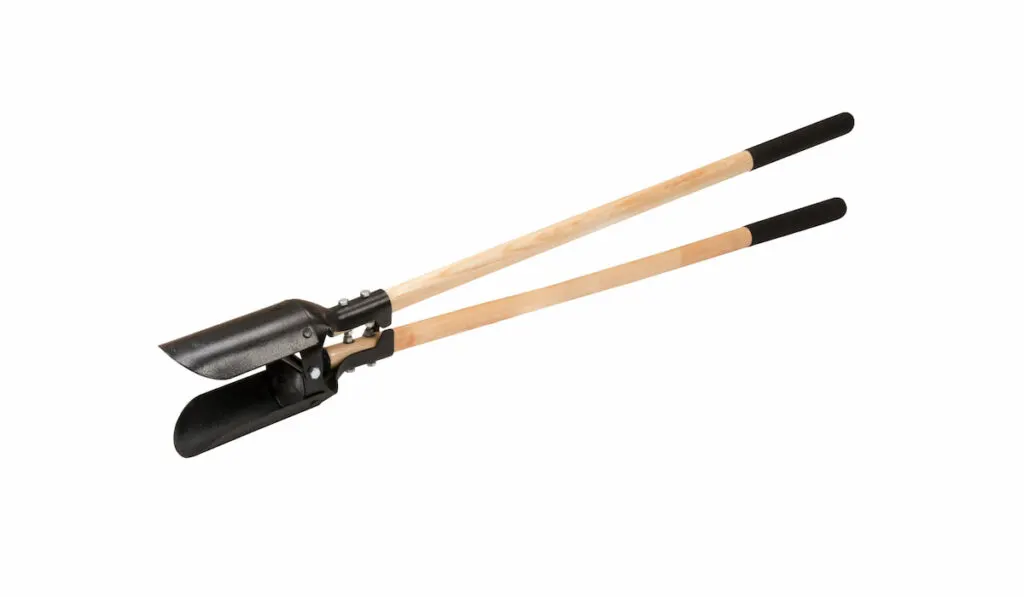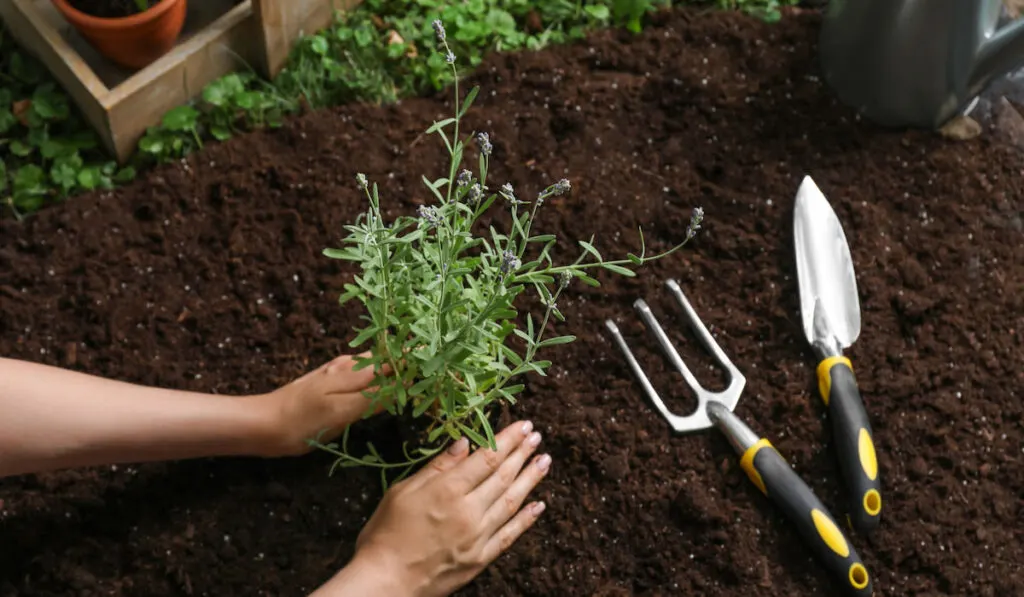*This post may have affiliate links, which means I may receive commissions if you choose to purchase through links I provide (at no extra cost to you). As an Amazon Associate, I earn from qualifying purchases. Please read my disclaimer for additional details.
A shovel is a shovel to a lot of people. Indeed, most people will only ever need a basic shovel in their lifetimes.
However, as renovations or other jobs become more complex, you’ll find that having a shovel built for the task at hand makes things much easier.
For example, you’re not going to want to use a gardening shovel to dig a large pit. Likewise, your standard shovel won’t be agile enough to use for planting tulips.
The right shovel will give you better results and make your work more enjoyable.
If you’re wondering about different types of shovels, or if you’re looking for a specific shovel for an upcoming project, we’ve put together this list of eleven types of shovels to help.
Let’s dive into learning more about the world of shovels, so you can find what you need!
Table of Contents
What Makes Shovels Different?
What’s the big deal with different types of shovels? Certainly, shovels vary in size, but is there anything else that separates them?
There’s a lot of design that goes into shovels.
The shape of the edge, the handle’s length, and the digging blade’s angle varies. You can find shovels with serrated edges or that are sharpened for cutting.
In addition, there are shovels designed to be multi-purpose tools for campers, outdoor explorers, and much more.
The Digging Shovel

Most folks envision digging shovels, also called a spade, when they think of a standard shovel. Digging shovels have pointed blades to help the user cut into sand, grass, gravel, dirt, or whatever else they’re shoveling.
Standard shovels vary in size, but you can generally expect them to have a handle that measures a few feet long with a basic metal handle.
If you visit any hardware store or look online, you’ll see that even digging shovels vary greatly. They come in all sizes, depending on your height and how much you want to dig.
The Post-Hole Digger

What if you want to dig a deep, but not necessarily wide, hole? Long ago, people had to dig with standard digging shovels whenever they wanted to install posts or fencing.
These days, however, you can use a post-hole digger to make neat holes that go down only, instead of down and wide.
With a post-hole digger, you push into the grass and dirt and clamp two sides of the shovel together to capture the loose soil. Then, you pull it out and put it to one side before repeating.
The result is tidy holes with a small radius that perfectly fit your post or pole.
Edging Shovels

Edging shovels help gardeners and landscapers maintain neat edges around lawns and flowerbeds. They’re also ideal when you need straight lines for an outdoor project.
An edging shovel usually has an extended shaft compared to digging shovels. Its digging plate is more petite and straight, which helps the blade go into the surface easier.
Digging shovels go straight down into the ground, versus a standard digging shovel that tends to move forward with every shovel strike.
People can use the sharp edge to break roots and branches or move deftly around areas to avoid damaging flowers.
The Flat Shovel

You can use a standard digging shovel on sand, gravel, or mulch, but it is much easier to use a flat shovel designed to move piles. Flat shovels have a flat blade and a metal plate that hold large amounts of whatever you’re working with.
The design allows the digging plate to move smoothly across grass or your driveway and into the pile without damaging or dulling the edges.
Of course, you won’t want to use these shovels to dig large holes, but they work for basic backyard projects. You’ll mostly use a flat shovel to move piles and spread things like mulch around quickly.
Handheld Shovels

Sometimes dexterity matters. When you want to work quickly and don’t need to move heavy amounts of dirt, a handheld shovel, or a trowel, will do the trick. You’ll find these in any hardware store next to the gardening tools.
These mini shovels are typically narrower than digging shovels. They have a sharper point designed to move into the soil quickly without too much muscle.
The Root Shovel
Root shovel styles vary, but usually, they have triangular blades that make it easy to shove into roots and cut them.
For larger, more stubborn roots, you should look for a root shovel with serrated blades so you can start to saw roots when your shovel is stuck in place.
Root shovels are specialty tools. You won’t want to use them around the garden or let your kids use them to help you with mulching. They have sharp edges and are essentially a cutting tool.
Snow Shovels

The name makes it obvious, but snow shovels are meant for wintertime when you need to clear snow from driveways, sidewalks, or parking lots. They also double as a half-decent snow sled when you’re in a bind.
These days, most of the snow shovels you see are made of plastic, but you can still buy them in metal or wood.
The plastic makes them lighter so you can lift more snow with ease. The plastic also prevents marks on cement and other surfaces while you work.
The digging plate is extremely wide compared to most shovels, because it’s designed to pick up or push large amounts of snow.
Folding Shovels

Folding shovels are a neat innovation that makes storing and carrying shovels more convenient. You can stick a folding shovel in the car or a backpack without worrying about it cutting anything.
Campers love folding shovels to dig holes for tent stakes, firepits, and when they need to use the bathroom outdoors.
They’re often smaller than a shovel you’d find in a backyard shed, but they come in various sizes, depending on what you need.
The Trench Shovel

Trench shovels are made to, well, dig trenches! They have long, narrow digging plates with sharper edges that make going deeper easier.
People use trench shovels to dig lines for bushes, trenches for fencing, or whatever else they need. The name comes from shovels that soldiers used in wars to dig trenches quickly.
Power Shovels

Sometimes you need more strength than what you have at home, so a power shovel is a terrific option.
Power shovels work similarly to jackhammers. They have an external power source that adds power and speed.
Power shovels are a good choice for when you’re dealing with impacted soil, hardened snow, and other objects that are hard to move.
However, buying one can be expensive, so you’ll typically need to hire a company to handle the work for you.
Transplant Shovels

You can buy shovels specifically made for moving flowers and other plants. They look like trench shovels, but typically come in smaller sizes.
The long plates make it easier to scoop under a plant without damaging its root system. Then, with a bit of work, you can make your way around the plant and pick it and its roots up with ease.
At some point, most homeowners will find themselves with at least a few different types of shovels.
As you become handier around the house, you’ll want shovels that make your work easier and faster.
